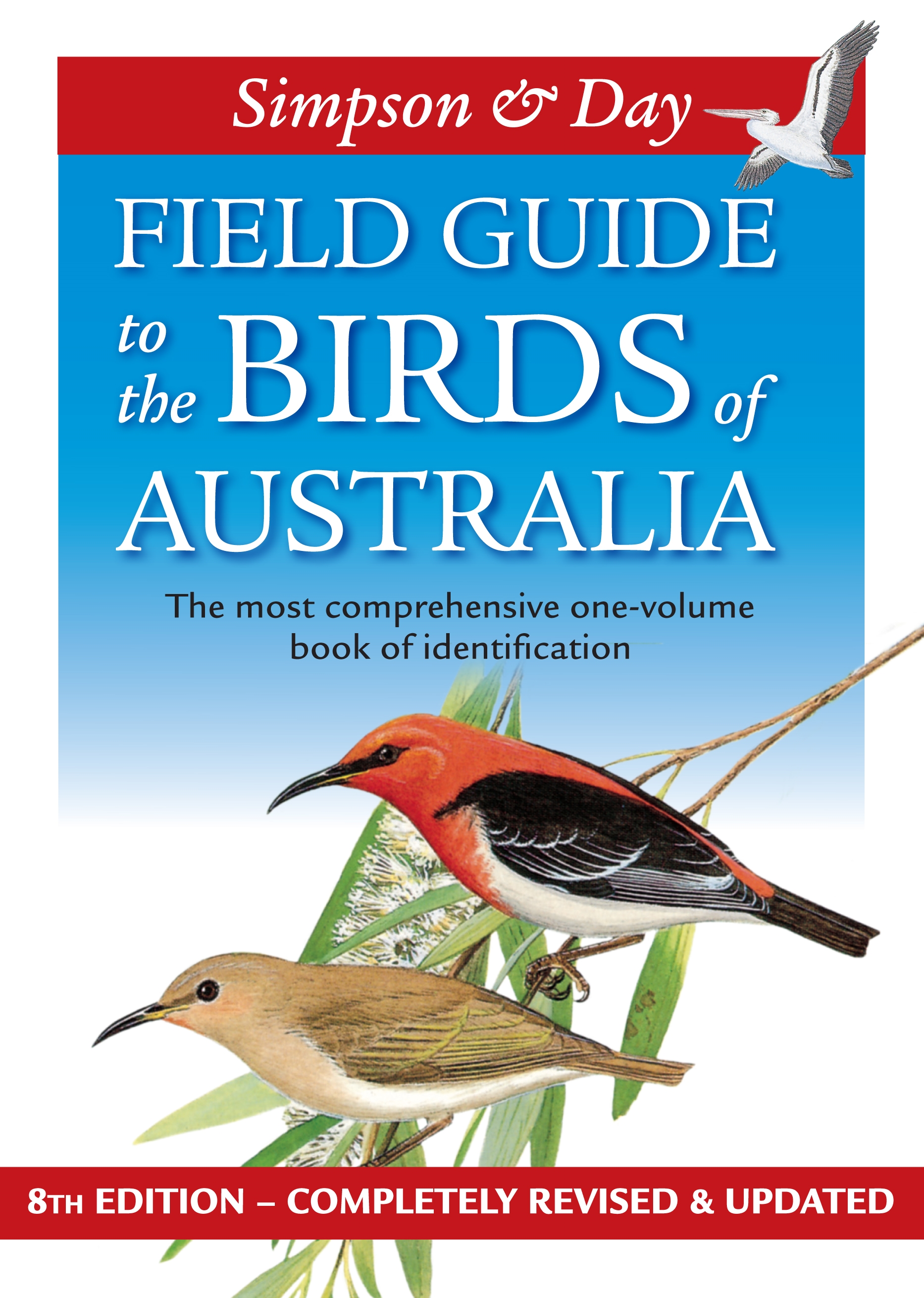New field guide to birds of Australia

Simpson and Day Field Guide to the Birds of Australia 8th edition
From time to time I feature birds on this travel blog. Birding is one of my major interests and I write about my sightings on Trevor’s Birding blog.
Many people carry a bird identification guide book with them on their travels. I make sure I always have one with me to help work out what I am seeing.
If you are a traveller – and interested in birds – I’d suggest that you find room for a bird field guide too. Most of them are compact enough to fit easily into a day pack or even a handbag.
Today sees the publication of a new field guide of Australian birds. The Simpson and Day field guide has been around since 1984 and has sold over half a million copies. Today the fully revised and updated 8th edition is published.
The publicist at Penguin Books Australia sent me a review copy a few weeks ago. I’ve written an extensive review of this exciting new book here on my birding blog.
Birds of Adelaide Zoo
I enjoy visiting the Adelaide Zoo on a regular basis. Not only does the zoo have a good selection of animals and reptiles, all kept in animal friendly and appropriate enclosures, but it also boasts an excellent collection of birds. Birding is one of my passions and you can read more about our birds on my blog called Trevor’s Birding.
On this post I feature only 4 of the species represented at the zoo; there are many more in the numerous aviaries. Some of the aviaries are walk-through, giving excellent close-up views of the birds.
The Australian Pelican shown above is a common water bird seen throughout Australia where there is suitable habitat. It is one of our most easily recognised birds and has featured in many books, documentaries and even feature films (Storm Boy).
Shown above, Australian Bustards (or wild turkey) are turkey sized birds of the inland regions of our country. Before land clearing for farming this species was far more widespread.
Below is a photo of the beautiful Princess Parrot, another bird of the arid inland regions. It is commonly kept in aviaries but is not often seen in its natural environment due to the remoteness of its preferred habitat. Another bird of the interior regions is the Flock Bronze-wing Pigeon, shown in the last photo.
Birds of Encounter Bay, Victor Harbor
The Victor Harbor area is an excellent place to observe birds.
The beaches and islands and rocky outcrops along the coast afford good views of many species.
The river corridors leading through the town have a completely different set of birds while the hinterland areas of farming, scrublands and open woodlands reveal yet a different set of species.
Here I have featured photos of just three common species.
For more information about birds, and the birds of Victor Harbor in particular, go to my Birding Blog here. The posts include photos of many more species.
Further reading:
Emus at Monarto Zoo, South Australia
When the open range zoo at Monarto near Adelaide was established, the perimeter fence enclosed some Emus inside them. These have now bred and are quite numerous in the various areas not inside the animal enclosures. I guess they wouldn’t last long in the lion or cheetah enclosures!
On our last visit we were delighted to see the male shown in the photo above. He is looking after a small group of chicks, resplendent in their striped plumage. On the bus tours we took through the zoo I took the photos below. At least one of them was taken while we were hiking from one exhibit to another.
Wittunga Botanic Gardens, Blackwood, Adelaide Hills
Botanic gardens are excellent places to hone your photography skills. I particularly enjoy taking photos of the many birds that tend to congregate in such places. But birds have a habit of flying off just as you focus on them!
Plants and flowers are different. They tend to stay in the same place making photography much easier – except when they are swaying in the breeze. When that happens I usually ask my wife to hold the branch still, trying not to get her hand or arm in the shot.
How about checking out my blog about birds?













